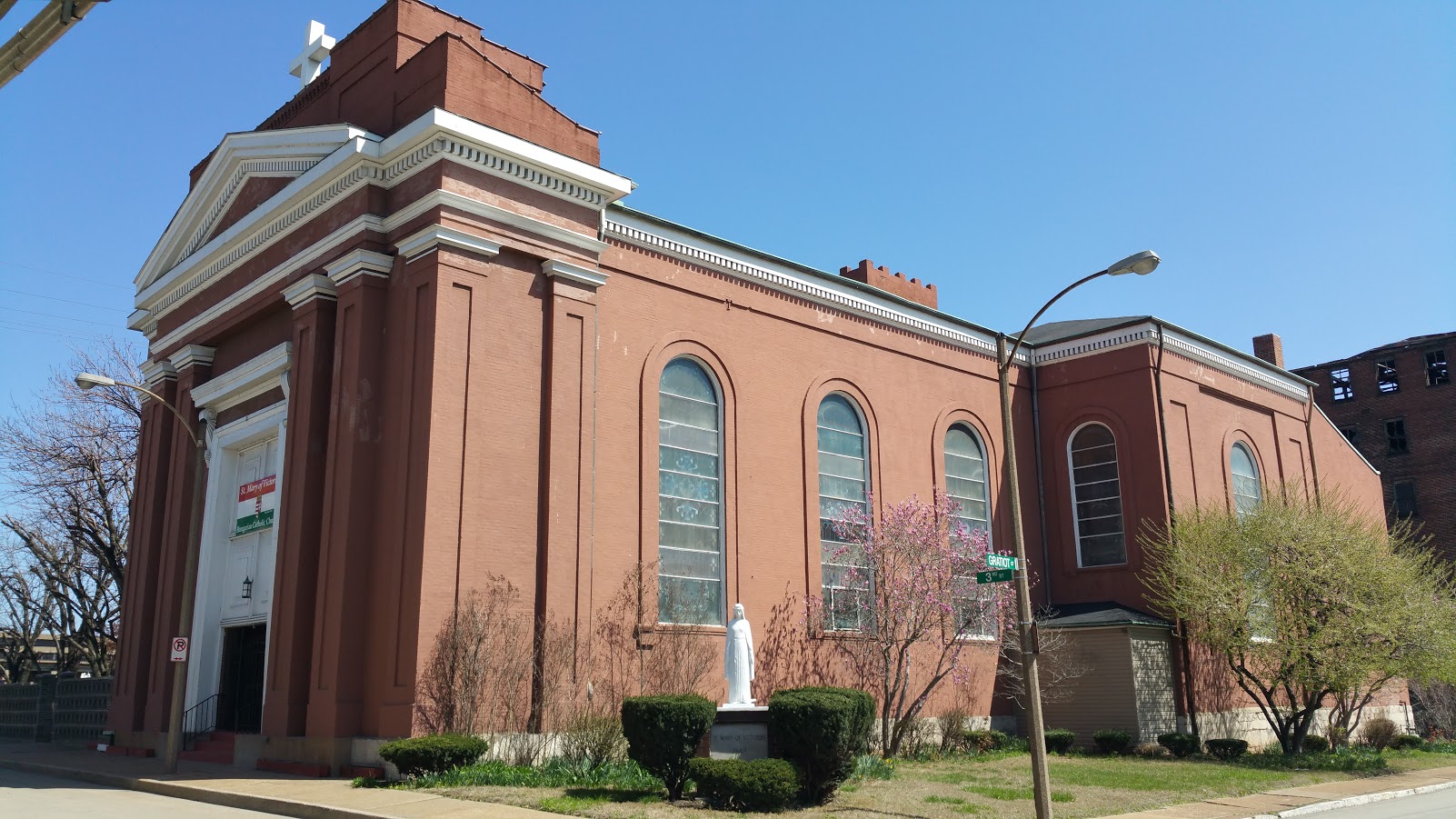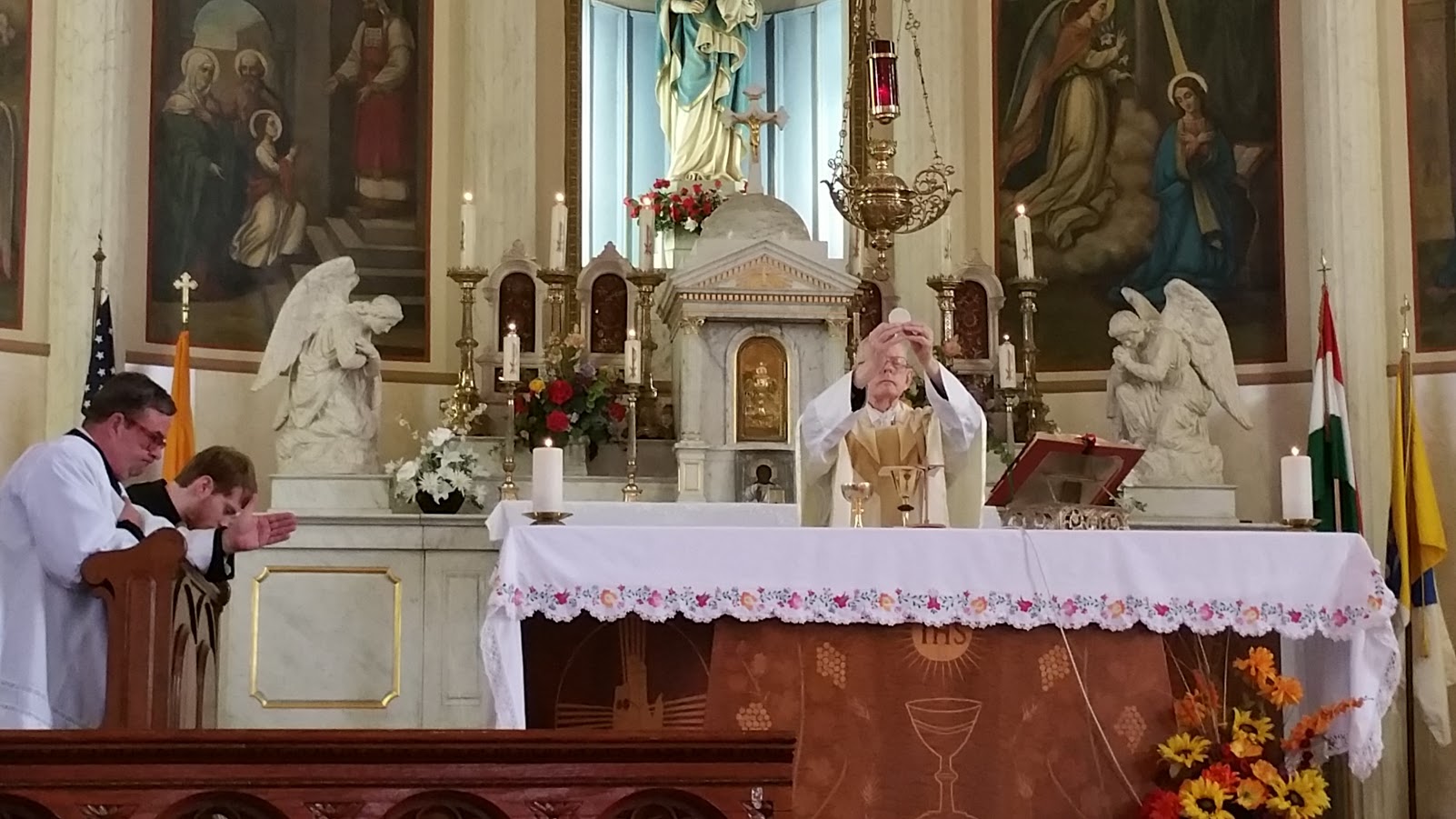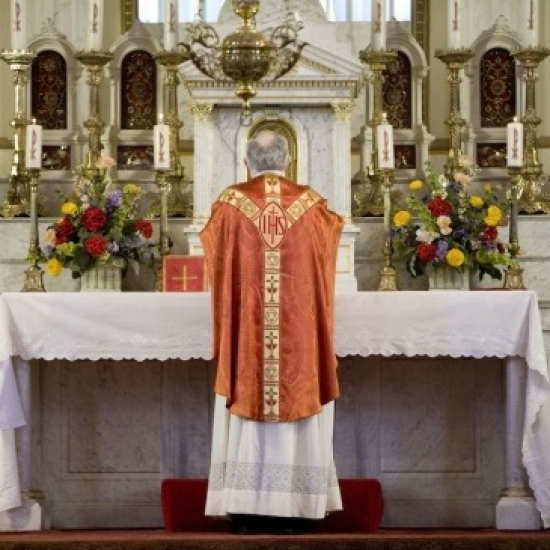11 September 2016, 24th Sunday in Ordinary Time (Year C)
Many of the texts in today's original Gregorian formulary are taken from an ancient formulary for the Dedication of a Church, because in the fifth century the dedication of a church in honor of St. Michael was celebrated at Rome on September 30 (later the 29th), and the chants for that day were later transferred to a nearby Sunday. We don't know exactly when that occurred. In very early times this Sunday followed immediately upon the autumnal Ember Days; since the services of Ember Saturday were prolonged throughout the night till morning, the day did not have a Mass proper to it, whence the borrowing. So the Introit and the psalm-verse Laetatus sum. . . have us enter the house of the Lord; the Gradual with the words of the same psalm and the Offertory treat of the altar and the sacrifice; the Communion (now Year A only in the OF) urges us to bring our sacrificial gifts and to offer our worship in God's house.
Introit: Da pacem
Offertory: O Jesus we adore thee, p. 305
(Year C) Communion: Dico vobis: gaudium,
Recessional: Lift high the cross, p. 244
Mass XI, PBC p. 58. Credo III, PBC p. 77
This Introit is also the Introit of the Votive Mass for Peace, which is traditionally sung on the second day of the Forty Hours Devotion (the US adaption of the popular Quarant' Ore). From this usage, it became one of the more widely known antiphons of the Gregorian repertoire. It has three phrases; in the third phrase the melody conveniently allows for a quick break after servi tui.
1. Da pacem Domine sustinentibus te
2. ut prophetae tuae fideles inveniantur
3. (a) exaudi preces servi tui
(b) et plebis tuae Israel
The first phrase is reminiscent of the Introit Rorate caeli, and the two are closely allied in spirit. Identical with it is the first phrase of the well-known Introit Statuit. The continual use of b♭ in the first and second phrases tends to make the melody tender and devout, while the frequent repetition of the same motif or of a similar one makes it impressive. This motif is composed of the notes ab♭gag over (Do)-mine, which remains the same in its first part, but changes slightly in its second over susti-(nentibus), tui, preces, tuae. It produces its greatest effect over tuae, because it sets in here with a major third, while in the other cases only a whole step precedes
The Year C Communion has a single phrase:
(a) Dico vobis: gaudium est Angelis Dei (b) super uno peccatore paenitentiam agente.
Significantly this piece begins immediately on the dominant of the mode. For Jesus is speaking, and He speaks a new word, a word full of consolation. Who would think that when a sinner does penance there is an increase in the joy of the angels in heaven, and that this joy is renewed as often as a human heart is brought to look into itself and is converted (super uno). The first part is developed about the note c; the second, about a. Einsiedeln 121 of has a broad virga and ‘t’ over est, where a ritardando is indicated, with evident good effect.
At St. Gall's, at Einsiedeln, and in some other places this Communion was sung on the twenty-second Sunday after Pentecost. It is sung in this Year C to match the Gospel reading, and at the same time acts as an admonition to those faithful to whom the liturgy of the Mass has not yet brought reconciliation with God and true interior peace. If the text is clearly enunciated, it will be seen how well the simple melody brings the word gaudium into prominence. There is joy in heaven, and peace in the heart of him who has again found his way back to God. The Father of the prodigal son crowns His kindness by preparing the most sumptuous banquet for him in Holy Communion.


















